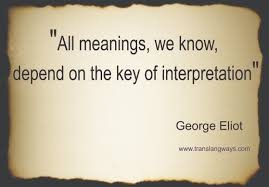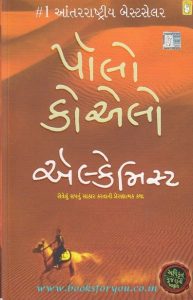Last month a thesis was sent to me for evaluation; “Translation is Science as well as Management – Translator’s Perspective.” I found the topic brilliant and the researcher has really done justice to the topic. The research is topical in nature, and not much work has been done on it. The thesis was written in Marathi language – the official language of Maharashtra in India.
Good translators vacillate over the subject of loyalty to maintain the originality of the text. A translator should be receptive to the originality of the text and should avoid temptation adding or subtracting matter from the original text. A good translator tries to  reproduce the text as exactly as possible to the maximum extent. He/she multitasks while translating: grasps the intended meaning of the source language, weigh and reflect over word choice for the target language, match the formatting of the source language, search and use the best terminology for the subject matter, finally measure cultural disparities in case it impacts phrasing or grammar and ensure by and large lucidity and accuracy of finished translation.
reproduce the text as exactly as possible to the maximum extent. He/she multitasks while translating: grasps the intended meaning of the source language, weigh and reflect over word choice for the target language, match the formatting of the source language, search and use the best terminology for the subject matter, finally measure cultural disparities in case it impacts phrasing or grammar and ensure by and large lucidity and accuracy of finished translation.
Translation is as much an art as a science: Though the computer these days does the job of translation, one cannot depend on the machine for effective completion of the job. It’s not possible to trust the process in terms of grammatical and cultural nuances. Human translation is still very much a necessity and should certainly be the preference for translating a good work. There are chances of even the human blundering few segments of the original work— but that’s why any reputable translation agency should have a thorough quality assurance process in place. The machines will never possess understanding and insight like a human mind.
Each language has its distinguishable exercising power: who else but the authors and poets can fraternise a language with command and conformity. The genuine, inner power of language is rarely used. It has been observed that even the most skilful speaker or an author cannot monopolise the power of language because power of language lies not with the speaker, but with language itself. Whoever has a command of language has part in its power. The power of a language cannot be restricted and repressed.
Each language has some exclusivity: some word that captures a concept or emotional state in a certain way. It therefore becomes difficult for a translator to capture the wideness of expression. The range of concepts and emotional state is the only indication of a language’s meticulousness. It is difficult to find a comparable dialect from one to another language. The expressions change while translating a text from one to another language. However sincerely one tries to interpret thoughts from one language into another, the possibility of the variation of meaning of certain words and expressions cannot be avoided. Here’s why the translator’s presumption to understand the author’s intentions, and re-imagine them in his/her own language is a delicate job.
Languages in demand: The demand for languages such as French, German, Portuguese, Russian and Spanish are always very high but other languages showing a steady increase in demand are Arabic, Chinese, Japanese, Indian languages such as Hindi, Marathi, Bengali, Tamil, Malayalam, in addition Korean and a number of languages from Mexico and Central America such as Mixtec, Zapotec, and Mayan.
What are the educational qualifications required for a translators? A bachelor’s degree is typically needed to become an interpreter or translator along with proficiency in at least two languages, one of which is usually English. Although majoring in a language is not really necessary. However, knowledge of a specific area such as pharma, history, botany, geology etc can be helpful skill for success in the career of translator. Besides it, listening, writing, cultural Intelligence, observation, computer knowledge and the biggest of all time management are some other required skills.
Some famous translated reserves: Paulo Coelho’s masterpiece book Alchemist which is written originally in Portuguese is translated in several languages all over world. It combines magic, mysticism, wisdom and wonder into an inspiring tale of self-discovery, The Alchemist has become a modern classic, selling millions of copies around the world and transforming the lives of countless readers across generations.
Jo Nesbo’s The Bat is a Norwegian story a crime thriller which is translated in many languages.
The girl with the dragon tattoo written by Stieg Larsson in Swedish language is the Millennium series which became craze of this generation’s international bestselling phenomenon. It’s a thriller story.
My brilliant friend by Elena Ferrante is written in Italian language which is considered a modern masterpiece from one of Italy’s most acclaimed authors. It is rich, intense, and generous-hearted story about two friends, Elena and Lila. Ferrante’s inimitable style lends itself perfectly to a meticulous portrait of these two women that is also the story of a nation and a touching meditation on the nature of friendship.
Some of the most popular Indian books translated in foreign languages are: Thirukkural also called as Kural is a Tamil sangam literature that consists of 1330 couplets those talk about everyday virtues of an individual. This book is one of the most important works in the history of Tamil language. It is one of the widely translated non-religious books in the world. It has been translated by more than 90 different translators including European and Asian. You can find this book in 40 different languages. Attributed to Thiruvalluvar, the Kural occupies an important place in the literature world.
Isha Upanishad is originally written in Sanskrit and is one of the shortest Upanishads. This Ivsavasya Upanishad proclaims the philosophy of non-dualism in which they declare God to be the sole inhabitant of everything that exists in this world. It is a primary Upanishad and is known into two recensions (revised edition) called as Kanva and Madhyandina. It has over 18 verses depending upon the recension. It is been translated into 64 languages.
Bhagvad Gita which is a universally acknowledged worlds literary works and is one of the spiritual masterpieces that is been translated into many languages. This has been treasured by American writers from Emerson and Thoreau to T.S. Eliot. With more than 200 translations in English itself, this is one the most translated Indian book. With more than 80 language translations, this book has reached a large mass audience.
Beyond birth and death originally written by A. C. Bhaktivedanta Swami Prabhupada, this novel discusses whether there is life after death or not. Prabhupada narrates how soul travels from one body to another and by chanting the name of Sri Krishna one gets help reaching Lord Sri Krishna’s ultimate abode. Chanting will help reveal what God is, what one is, how are we conditioned and how can we step out of that conditioning. It is been translated into 51 different languages.















































